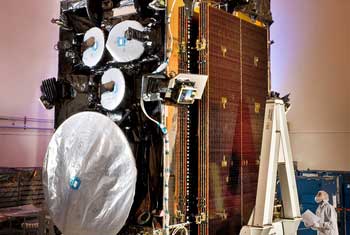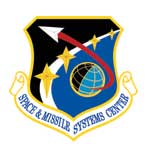
The U.S. military's Advanced Extremely High Frequency 1 satellite. CREDIT: Lockheed Martin
[SatNews] Success, from launch to burns expeditiously raised the satellite above the densest regions of the Van Allen radiation belts.
Extremely High Frequency satellite, launched May 4 by the U.S. Air Force Space Command's Space and Missile Systems Center and 45th Space Wing, successfully arrived at its geostationary-orbit test location at approximately 3:30 p.m. PDT today.
Early in the transfer, a total of four Liquid Apogee Engine burns were executed near apogee. These burns expeditiously raised the satellite above the densest regions of the Van Allen radiation belts. Upon completion of the four LAE burns, the solar arrays were deployed in preparation for the Hall Current Thruster phase of orbit transfer.
During the HCT phase, the U.S. Air Force executed 47 burns over a period of 85 days to raise the perigee and reduce the apogee of AEHF-2's orbit. The next phase, payload activation, will include deploying the payload wings and antennas and turning on the payload electronics. Once complete, the system will begin an approximately two month on-orbit test phase.

AEHF is a joint service satellite communications system that will provide survivable, global, secure, protected and jam-resistant communications for high-priority military ground, sea and air assets. The AEHF system is the follow-on to the Milstar system, augmenting, improving and expanding the Department of Defense's Military Satellite Communication architecture.

AEHF-2 was procured from Lockheed Martin Space Systems Company by the MILSATCOM Systems Directorate, part of Air Force Space Command's Space and Missile Systems Center. The MILSATCOM Systems Directorate plans, acquires and sustains space-based global communications in support of the president, secretary of defense and combat forces. The MILSATCOM enterprise consists of satellites, terminals and control stations and provides communications for more than 16,000 air, land and sea platforms.

